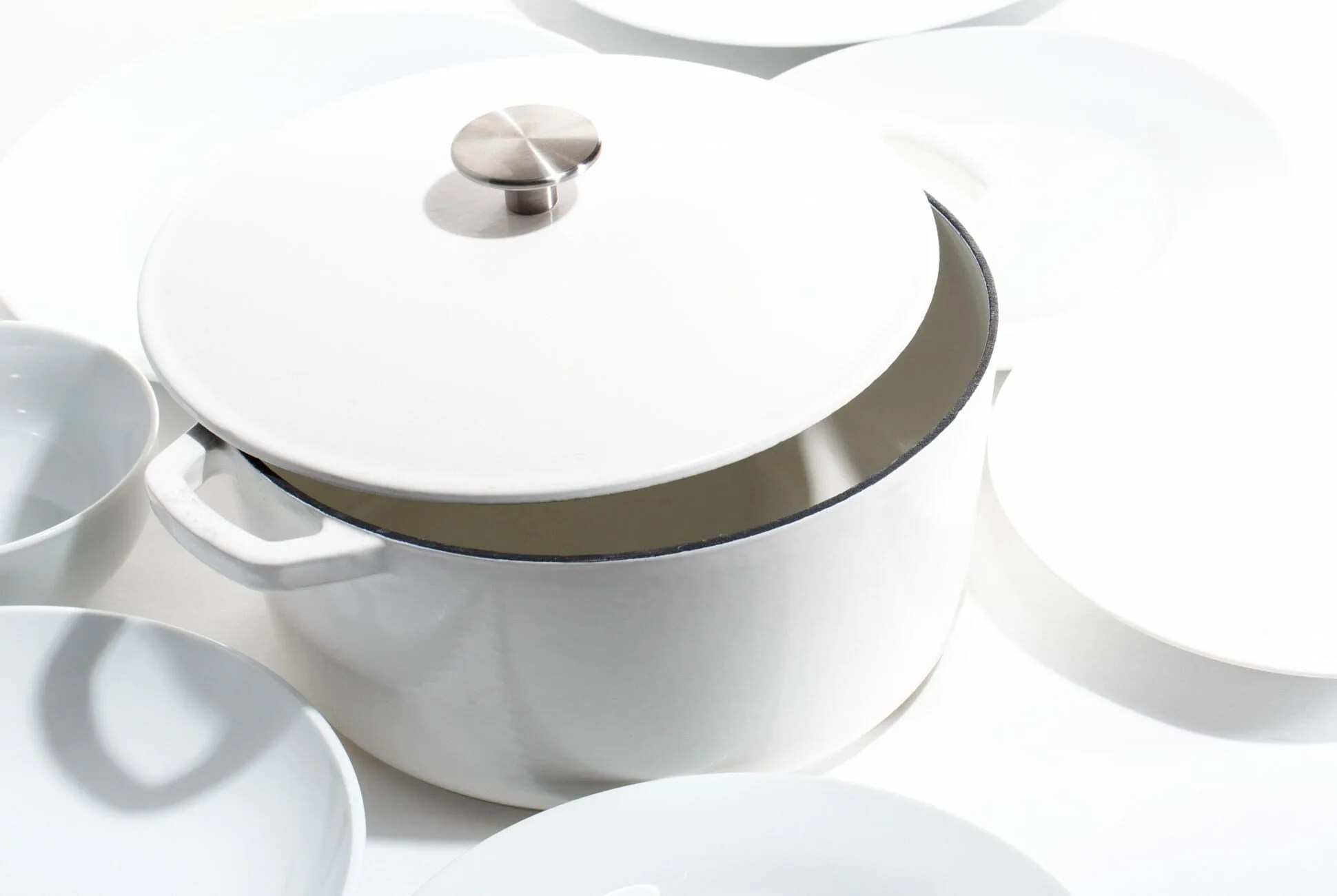The enameled dutch oven is a cast-iron pot coated with a type of easy-cleaning, lower-maintenance glass, granting it the superior heat retention of cast-iron without the need to season ad finitum. The catch? Dutch ovens are not cheap — especially if you want one that will stand the test of time. Leading brands like Staub and Le Creuset are well-made, but require what amounts to a bank account sacrifice to own. More affordable options like Lodge are a fraction of the cost and may function similarly for a short time, but are quicker to show signs of degradation (enamel chipping, crazing, discoloration, etc.).
The Milo dutch oven is new and yet another upstart direct-to-consumer brand that claims to replicate high-end quality for mid-market prices. Its dutch oven is not as cheap as Lodge’s ($135 vs. $45), but it’s still firmly one-third what Le Creuset and Staub demand and claims at least equal performance and long-term durability. A bold proclamation, and one we had to test.
The Good: It held heat noticeably better than my Le Creuset and just about even with a Staub, likely due to the more traditional heavy build it shares with Staub. The Milo also smartly borrows Le Creuset’s lighter-colored interior, which makes for much easier monitoring of browning meats and veggies. The lighter-colored interior cleans with a bit of hot water, a scrub and, at worst, a very small dab of soap.
Outside of the cooking realm, the Milo oven is backed by a lifetime warranty that ensures replacement for any product that shows damage from everyday use. From my personal interactions with its customer service team and its founder, Milo also seems far, far more responsive than your run-of-the-mill direct-to-consumer brand. Finally, though vain and not at all performance-oriented, the creamy white looks damn good perched up on a stovetop or in the center of a dining room table.
Who It’s For: If you want the cooking quality and warranty assurance that comes with Le Creuset and Staub, but don’t care about color options, don’t believe in the power of the self-basting nubs (protrusions on the inside of the lid that some believe collect steam and self-baste whatever you’re cooking) and aren’t in it for the brand name, a Milo may be for you. Its price also frames it perfectly in realistic gift-giving range, and its white colorway already looks the part for a wedding present.
Watch Out For: My main quibble with the Milo lies in the fit of the lid. It wasn’t a failure or something that ruined any dish I made in it, but it was markedly less tight-fitted than the Staub’s lid and a bit less fitting than Le Creuset’s (an issue I noted when we compared the two a while back). This means you may see a quicker loss of liquid when braising or cooking for long durations. The counterpoint to this is that the lid actually should release some liquid, as you want to evaporate flavor-diluting water.

